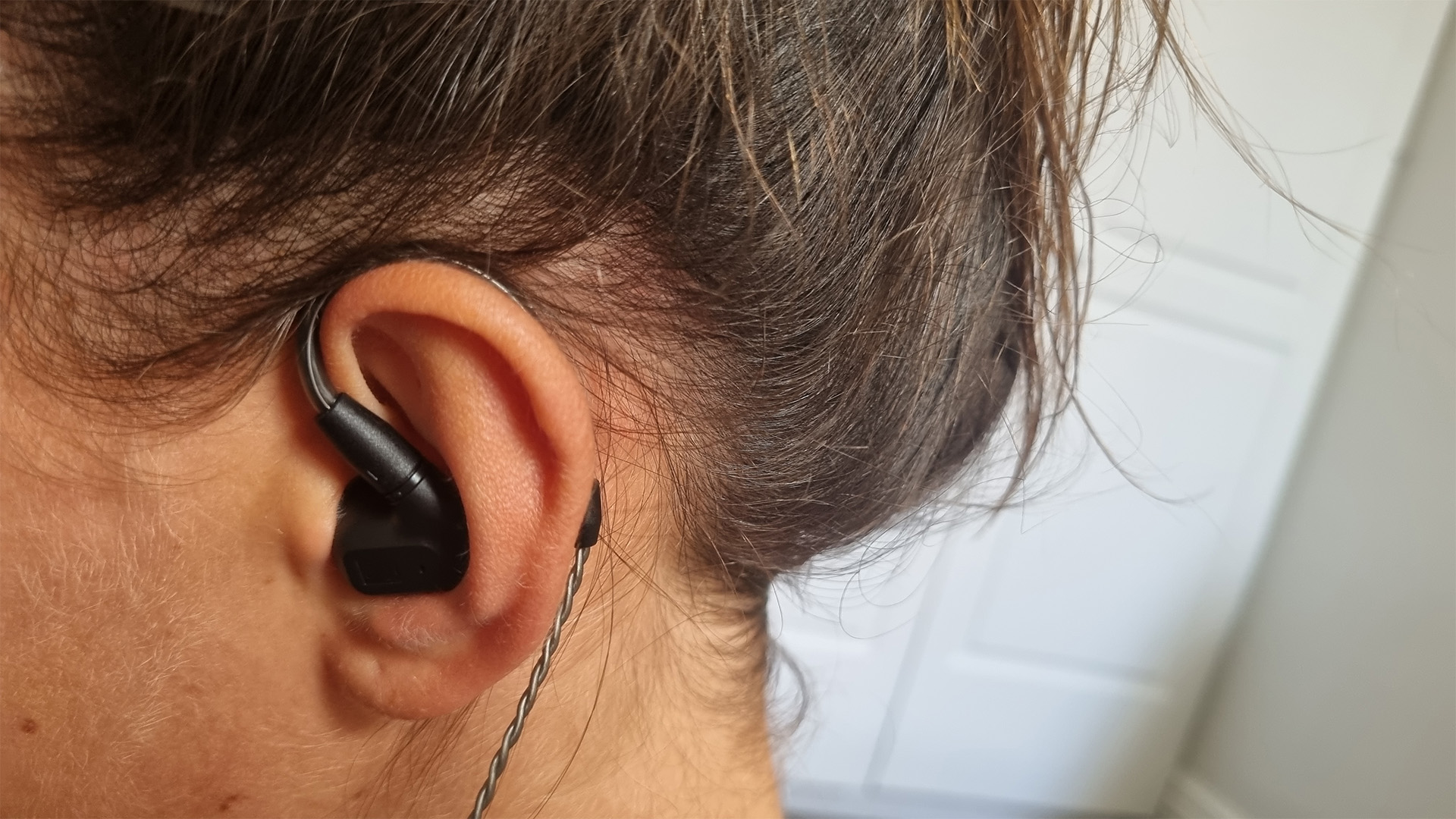Home>Instruments>Drums>How To Learn Drums By Ear


Drums
How To Learn Drums By Ear
Modified: February 8, 2024
Learn how to play drums by ear with our comprehensive guide. Master drumming techniques and improve your skills without sheet music. Start your musical journey today!
(Many of the links in this article redirect to a specific reviewed product. Your purchase of these products through affiliate links helps to generate commission for AudioLover.com, at no extra cost. Learn more)
Table of Contents
Introduction
Learning to play the drums by ear is a valuable skill that can greatly enhance a drummer’s musicality and overall proficiency. Unlike relying solely on sheet music or formal instruction, learning by ear involves listening to music and deciphering the drum patterns and rhythms without the aid of written notation. This approach not only fosters a deeper understanding of music but also hones essential listening skills, rhythmic interpretation, and musical intuition.
Throughout the history of music, many legendary drummers, including Ringo Starr, Keith Moon, and John Bonham, developed their craft primarily by ear, allowing them to infuse their playing with a unique and expressive style. In this article, we will explore the benefits of learning drums by ear, as well as techniques and strategies to effectively develop this skill. Whether you’re a beginner drummer or an experienced musician looking to expand your musical horizons, learning drums by ear can open up a world of possibilities and creativity.
Benefits of Learning Drums by Ear
Learning to play the drums by ear offers a myriad of benefits that contribute to a drummer’s overall musical growth and proficiency. By honing the ability to listen, interpret, and replicate drum patterns without relying on written notation, drummers can cultivate a deeper understanding of music and develop essential skills that transcend traditional learning methods. Below are some of the key benefits of learning drums by ear:
- Developing a Strong Sense of Rhythm: When learning by ear, drummers immerse themselves in the rhythmic intricacies of music, allowing them to internalize and replicate complex rhythms with greater precision. This process fosters a strong sense of timing, groove, and rhythmic dexterity, which are essential elements of a drummer’s skill set.
- Improving Listening Skills: Learning drums by ear sharpens a drummer’s listening acumen, enabling them to discern subtle nuances in music, such as ghost notes, accents, and dynamic variations. This heightened auditory perception not only enhances musical interpretation but also facilitates better communication and collaboration with other musicians.
- Understanding Dynamics and Nuances: By closely listening to drum parts within a musical context, drummers gain insights into the dynamic and tonal nuances that define a song. This deeper understanding allows them to infuse their playing with expressive dynamics, nuanced accents, and appropriate stylistic variations, elevating their musicality.
These benefits collectively contribute to a drummer’s musical fluency, creativity, and adaptability, empowering them to engage with music more intuitively and authentically. As we delve into the techniques for learning drums by ear, it becomes evident that this approach not only enhances technical proficiency but also nurtures a deeper connection to the art of drumming.
Developing a Strong Sense of Rhythm
Learning drums by ear is a powerful method for honing a drummer’s sense of rhythm. By actively engaging with music and discerning rhythmic patterns through attentive listening, drummers can internalize and replicate complex rhythms with greater accuracy and musicality. This approach cultivates a deep-seated rhythmic intuition that transcends the confines of written notation, allowing drummers to embody the pulse and groove of a song with remarkable authenticity.
One of the key advantages of developing a strong sense of rhythm through ear training is the ability to internalize diverse rhythmic styles and patterns. Whether it’s the syncopated rhythms of funk, the driving backbeat of rock, or the intricate polyrhythms of jazz, learning by ear enables drummers to immerse themselves in various rhythmic idioms and incorporate these influences into their playing organically.
Furthermore, this method fosters a heightened awareness of timing, phrasing, and dynamic nuances within a musical context. Drummers who learn by ear develop a keen sensitivity to the ebb and flow of a song, allowing them to dynamically adapt their playing to suit the musical landscape. This adaptive prowess is particularly valuable in live performance settings, where drummers must respond intuitively to the nuances of a performance, interact with fellow musicians, and propel the music with unwavering rhythmic precision.
Ultimately, developing a strong sense of rhythm through learning drums by ear empowers drummers to embody the fundamental essence of music: rhythm. By internalizing and expressing rhythmic patterns with fluency and authenticity, drummers elevate their musicality, connect more profoundly with the music, and forge a compelling rhythmic identity that resonates with audiences.
Improving Listening Skills
Learning drums by ear is a transformative process that significantly enhances a drummer’s listening skills. By actively engaging with music and deciphering drum patterns solely through auditory perception, drummers sharpen their ability to discern subtle nuances, dynamic variations, and rhythmic intricacies within a musical composition. This heightened auditory acumen not only enriches their musical interpretation but also fosters a deeper connection to the art of drumming.
One of the primary benefits of improving listening skills through ear training is the development of acute rhythmic perception. Drummers who learn by ear cultivate a keen awareness of rhythmic nuances, such as ghost notes, syncopated accents, and subtle variations in groove and feel. This heightened sensitivity allows them to replicate and infuse these nuances into their playing, adding depth and authenticity to their musical expression.
Furthermore, learning drums by ear nurtures a profound understanding of musical dynamics and tonal nuances. Drummers develop the ability to discern the interplay of dynamics within a song, identifying shifts in volume, intensity, and tonal coloration. This acute awareness enables them to craft nuanced and expressive drum parts that complement the musical dynamics, elevating the overall impact and emotive resonance of the music.
Moreover, this method of learning fosters active engagement with music, encouraging drummers to immerse themselves in the sonic tapestry of a composition. By focusing on intricate details and subtle variations within drum patterns, drummers develop a deep-seated appreciation for the artistry and craftsmanship inherent in drumming, further enriching their musical experience.
Ultimately, the process of improving listening skills through learning drums by ear transcends technical proficiency, instilling a profound sense of musical empathy, intuition, and connection. Drummers who embrace this approach develop a heightened sensitivity to the nuances of music, enabling them to communicate and express themselves more authentically, dynamically, and empathetically through their instrument.
Understanding Dynamics and Nuances
Learning to play the drums by ear equips drummers with a profound understanding of the dynamics and nuances inherent in music. By actively engaging with and deciphering drum patterns solely through auditory perception, drummers develop a keen sensitivity to the subtle variations in dynamics, tonal coloration, and expressive nuances within a musical composition. This heightened awareness enriches their musical interpretation, enabling them to infuse their playing with expressive depth and authenticity.
One of the key benefits of understanding dynamics and nuances through ear training is the ability to discern and replicate subtle tonal variations and dynamic shifts within drum patterns. Drummers who learn by ear develop a nuanced understanding of the interplay between soft, delicate strokes and powerful, assertive accents, allowing them to craft drum parts that resonate with emotive depth and expressive range.
Furthermore, this method of learning fosters a deep-seated appreciation for the art of musical storytelling through drumming. Drummers gain insights into the emotive impact of nuanced dynamics, learning to convey a wide spectrum of emotions and moods through their playing. Whether it’s the gentle whisper of a delicate brush pattern or the thunderous roar of a climactic fill, understanding dynamics and nuances empowers drummers to articulate compelling musical narratives that captivate and resonate with listeners.
Moreover, learning drums by ear nurtures an acute awareness of the rhythmic and textural nuances that define a song. Drummers develop the ability to discern subtle rhythmic variations, such as ghost notes, intricate polyrhythms, and nuanced groove variations, allowing them to replicate and integrate these nuances into their playing with precision and finesse.
Ultimately, the process of understanding dynamics and nuances through learning drums by ear transcends technical proficiency, fostering a profound connection to the emotive and expressive potential of drumming. Drummers who embrace this approach develop a richly nuanced and dynamically expressive musical voice, capable of conveying a wide spectrum of emotions, moods, and musical narratives through their instrument.
Techniques for Learning Drums by Ear
Mastering the art of learning drums by ear involves employing a range of techniques that enhance auditory perception, rhythmic interpretation, and musical intuition. By actively engaging with music and deciphering drum patterns solely through auditory perception, drummers can refine their ability to internalize, replicate, and innovate drum parts with remarkable precision and musicality. Below are some key techniques for learning drums by ear:
- Active Listening: Engage in active, focused listening to discern and internalize drum patterns within a musical context. Pay attention to rhythmic nuances, dynamic variations, and tonal textures, allowing the music to inform and inspire your playing.
- Breaking Down Drum Patterns: Analyze and deconstruct complex drum patterns into individual components, such as kick, snare, hi-hat, and cymbal articulations. This process allows for a detailed understanding of the rhythmic interplay and phrasing within a drum part.
- Transcribing Drum Parts: Develop the skill of transcribing drum parts by listening to music and notating the rhythmic patterns and accents. Transcription enhances rhythmic literacy and facilitates the internalization of diverse rhythmic styles and patterns.
- Practicing with a Metronome: Utilize a metronome to practice replicating and internalizing rhythmic patterns with unwavering precision and timing. This fosters rhythmic discipline and strengthens the ability to synchronize with diverse musical contexts.
By incorporating these techniques into their practice regimen, drummers can cultivate a deep-seated rhythmic intuition, sharpen their listening skills, and develop the ability to internalize and express diverse rhythmic styles with fluency and authenticity. Learning drums by ear not only enhances technical proficiency but also nurtures a profound connection to the rhythmic pulse and expressive nuances of music, empowering drummers to engage with music more intuitively and authentically.
Active Listening
Active listening is a foundational technique for learning drums by ear, enabling drummers to immerse themselves in the rhythmic intricacies of music and develop a deep-seated understanding of drum patterns within a musical context. By engaging in focused, attentive listening, drummers can discern and internalize rhythmic nuances, dynamic variations, and tonal textures, allowing the music to inform and inspire their playing with remarkable depth and authenticity.
One of the key aspects of active listening is the ability to discern and isolate individual elements within a drum pattern. By focusing on specific components such as kick, snare, hi-hat, and cymbal articulations, drummers can analyze the interplay of these elements and gain a detailed understanding of the rhythmic phrasing and dynamics within a drum part. This level of attentive listening allows drummers to replicate and innovate drum patterns with precision and musicality, infusing their playing with expressive depth and rhythmic finesse.
Furthermore, active listening fosters a heightened awareness of rhythmic nuances and subtle variations within a musical composition. Drummers develop the ability to discern ghost notes, syncopated accents, and dynamic shifts, allowing them to replicate and integrate these nuances into their playing with fluency and authenticity. This acute rhythmic perception enriches their musical interpretation and empowers them to craft compelling drum parts that resonate with emotive depth and expressive range.
Moreover, active listening nurtures an intuitive connection to the pulse and groove of a song, enabling drummers to dynamically adapt their playing to suit the musical landscape. By internalizing the rhythmic intricacies of a composition, drummers develop a keen sensitivity to the ebb and flow of the music, allowing them to propel the rhythm with unwavering precision and expressive nuance.
Ultimately, active listening is a transformative technique that transcends technical proficiency, instilling a profound sense of musical empathy, intuition, and connection. Drummers who embrace this approach develop a heightened sensitivity to the nuances of music, enabling them to communicate and express themselves more authentically, dynamically, and empathetically through their instrument.
Breaking Down Drum Patterns
An essential technique for learning drums by ear involves the systematic breakdown and analysis of complex drum patterns. By deconstructing these patterns into their individual components, such as kick, snare, hi-hat, and cymbal articulations, drummers can gain a comprehensive understanding of the rhythmic interplay and phrasing within a drum part. This analytical approach enables drummers to replicate and innovate drum patterns with precision and musicality, fostering a deep-seated rhythmic intuition and fluency.
When breaking down drum patterns, drummers focus on discerning the specific roles and interactions of each drum component within the pattern. By isolating and analyzing the rhythmic relationships between the kick, snare, and various cymbal articulations, drummers develop a nuanced understanding of how these elements contribute to the overall groove and feel of the pattern. This detailed examination enhances their ability to internalize and express diverse rhythmic styles with authenticity and finesse.
Furthermore, this technique facilitates the exploration of rhythmic variations and syncopated accents within a drum pattern. By dissecting the phrasing and rhythmic subdivisions present in the pattern, drummers can identify subtle nuances, ghost notes, and dynamic shifts, allowing them to incorporate these elements into their playing with fluency and expressive depth. This level of rhythmic literacy empowers drummers to infuse their playing with emotive nuances and dynamic range, elevating their musical expression.
Moreover, breaking down drum patterns nurtures a keen awareness of the structural and textural elements that define a rhythm. Drummers develop the ability to discern the underlying pulse, groove variations, and transitional fills within a pattern, enabling them to replicate and innovate these elements with remarkable precision and musicality. This analytical approach enriches their rhythmic interpretation and empowers them to craft compelling drum parts that resonate with expressive depth and rhythmic finesse.
Ultimately, breaking down drum patterns is a transformative technique that enhances a drummer’s rhythmic perception, fluency, and expressive capabilities. By engaging in this methodical analysis, drummers develop a profound understanding of the rhythmic intricacies present in music, empowering them to communicate and express themselves more authentically and dynamically through their instrument.
Transcribing Drum Parts
Transcribing drum parts is a fundamental technique that enhances a drummer’s rhythmic literacy and fluency, fostering a deep understanding of diverse rhythmic styles and patterns. This process involves listening to music and notating the rhythmic patterns, accents, and dynamic variations present in the drum parts. By engaging in the meticulous transcription of drum patterns, drummers refine their ability to internalize, replicate, and innovate rhythmic motifs with precision and musicality.
One of the key benefits of transcribing drum parts is the development of acute rhythmic perception and analytical skills. By carefully listening to and notating the intricate rhythmic interplay within drum patterns, drummers cultivate a nuanced understanding of phrasing, subdivision, and dynamic nuances. This heightened rhythmic literacy empowers drummers to internalize and express diverse rhythmic styles and patterns with authenticity and finesse.
Furthermore, transcribing drum parts nurtures a comprehensive understanding of the structural and textural elements that define a rhythm. Drummers gain insights into the placement of accents, ghost notes, and transitional fills within a drum pattern, allowing them to replicate and innovate these elements with remarkable precision and musicality. This detailed analysis enriches their rhythmic interpretation and empowers them to craft compelling drum parts that resonate with expressive depth and rhythmic finesse.
Moreover, this technique facilitates the exploration of diverse rhythmic idioms and styles. By transcribing drum parts from various genres and musical traditions, drummers expand their rhythmic vocabulary and deepen their appreciation for the artistry and craftsmanship inherent in drumming. This exposure to diverse rhythmic styles fosters a versatile and adaptable approach to rhythm, enabling drummers to engage with music across a wide spectrum of genres and musical contexts.
Ultimately, transcribing drum parts is a transformative technique that enhances a drummer’s rhythmic perception, fluency, and expressive capabilities. By immersing themselves in the process of meticulous transcription, drummers develop a profound connection to the rhythmic pulse and expressive nuances of music, empowering them to communicate and express themselves more authentically and dynamically through their instrument.
Practicing with a Metronome
Utilizing a metronome is a foundational technique for refining rhythmic precision, internalizing diverse tempos, and cultivating unwavering timing and groove. By practicing with a metronome, drummers develop a heightened sense of rhythmic discipline, enabling them to synchronize with diverse musical contexts and maintain consistent tempo and groove with remarkable precision.
One of the key advantages of practicing with a metronome is the development of unwavering rhythmic precision and timing. By aligning their playing with the metronome’s steady pulse, drummers refine their ability to execute rhythmic patterns with consistent accuracy and fluency. This disciplined approach fosters a deep-seated sense of rhythmic stability and precision, enhancing the drummer’s ability to propel the music with unwavering groove and timing.
Furthermore, practicing with a metronome nurtures the internalization of diverse tempos and rhythmic subdivisions. Drummers can gradually increase or decrease the metronome’s tempo, allowing them to acclimate to various rhythmic contexts and develop fluency across a wide spectrum of tempos. This adaptive prowess equips drummers to engage with music dynamically, responding intuitively to tempo fluctuations and rhythmic variations with finesse and confidence.
Moreover, the disciplined practice with a metronome instills a keen awareness of rhythmic subdivisions and phrasing. Drummers develop the ability to articulate complex rhythmic patterns and syncopated accents with precision, internalizing diverse rhythmic subdivisions and enhancing their rhythmic fluency. This meticulous approach enriches their rhythmic interpretation and empowers them to craft compelling drum parts that resonate with expressive depth and rhythmic finesse.
Ultimately, practicing with a metronome is a transformative technique that enhances a drummer’s rhythmic discipline, precision, and adaptability. By internalizing diverse tempos, refining rhythmic precision, and developing unwavering timing and groove, drummers cultivate a profound connection to the rhythmic pulse of music, empowering them to communicate and express themselves more authentically and dynamically through their instrument.
Conclusion
Learning to play the drums by ear is a transformative journey that nurtures a deep-seated connection to the rhythmic pulse and expressive nuances of music. By actively engaging with music, discerning rhythmic patterns, and internalizing diverse styles and phrasing solely through auditory perception, drummers develop a profound understanding of the art of drumming. This approach not only enhances technical proficiency but also fosters a heightened sense of musical empathy, intuition, and connection.
Throughout this exploration of learning drums by ear, we’ve delved into the myriad benefits that this approach offers. From developing a strong sense of rhythm and improving listening skills to understanding dynamics and nuances, the process of learning by ear empowers drummers to engage with music more authentically and dynamically. Moreover, the techniques involved, such as active listening, breaking down drum patterns, transcribing drum parts, and practicing with a metronome, serve as invaluable tools for honing rhythmic perception, fluency, and expressiveness.
Ultimately, the journey of learning drums by ear transcends technical proficiency, instilling a profound sense of musical empathy, intuition, and connection. Drummers who embrace this approach develop a heightened sensitivity to the nuances of music, enabling them to communicate and express themselves more authentically, dynamically, and empathetically through their instrument. As they continue to refine their ability to discern, replicate, and innovate drum patterns with precision and musicality, they forge a compelling rhythmic identity that resonates with audiences and fellow musicians.
Whether you’re a beginner drummer embarking on this transformative journey or an experienced musician seeking to deepen your musical connection, learning drums by ear opens up a world of possibilities and creativity. By immersing yourself in the rhythmic tapestry of music, engaging in focused, attentive listening, and refining your rhythmic precision and expressiveness, you can elevate your drumming to new heights and cultivate a deeply authentic and intuitive musical voice.











